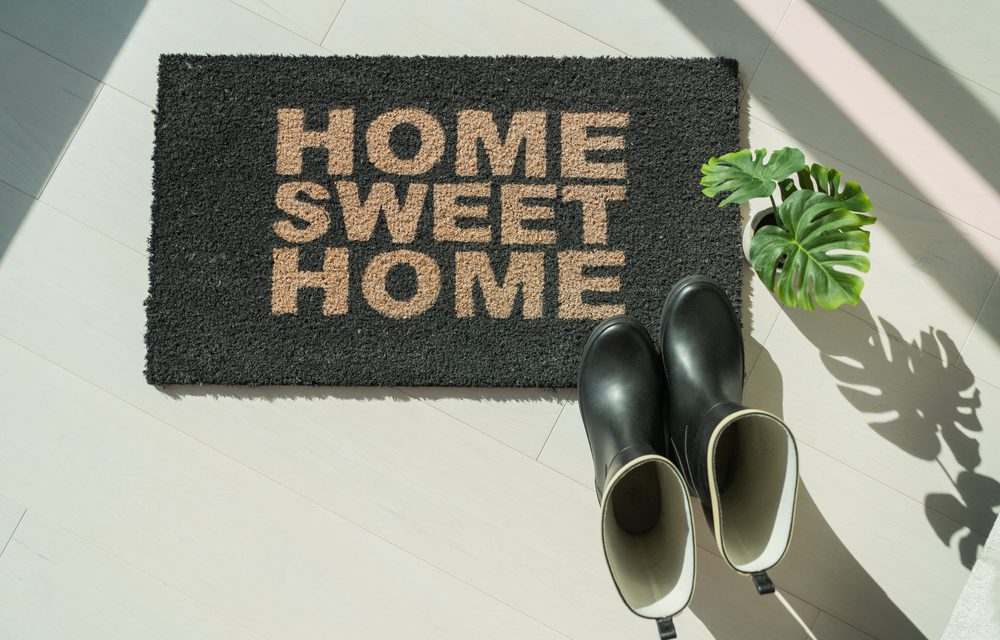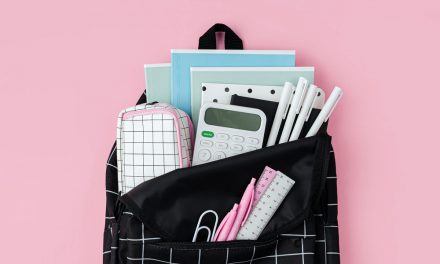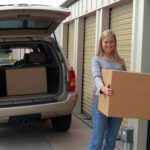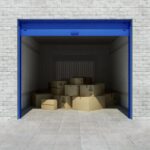Spring is known as a season of new beginnings. All around, trees are sprouting fresh leaves, flowers are budding new blossoms, and gray winter lawns are turning green.
For many, those new beginnings are symbolized by a change of address. Spring offers mild weather, seasonable temperatures, and the promise of fresh starts, all of which make it a popular time to move. In fact, spring is the unofficial start of moving season in the United States.1
The savviest spring movers know the importance of preparing for wet conditions. So whether you’re moving your belongings into your new home or into a self-storage unit, here are five top tips for moving in the rain.
#1 Wrap Everything You Can
The hands-down best way to protect your belongings during a rainy move is to wrap them in plastic. Fortunately, you have a few easy options for doing so:
- Shrink-wrap – Shrink-wrap is a time-tested method of protecting your belongings during a move, not only from rain but from bumps, scratches, and knicks that can also occur during transit. Shrink-wrap adheres tightly to your belongings, keeping water out.
- Garbage bags – Garbage bags are a relatively inexpensive way to wrap your belongings. They can be especially handy during unexpected showers.
- Plastic tarps – You can also protect your belongings with plastic tarps. Be sure to tape down the edges and secure the tarps with rope or bungee cords to ensure your items stay dry.
For the most protection, wrap individual or like items before packing them into boxes. Gather all sorts of packing material, such as plastic wrap, cardboard boxes, packing tape, shrink wrap, etc. This will help keep them dry, even if the box gets wet during a downpour. If you have enough material, you can even wrap the boxes themselves.
#2 Use Floor Mats
Here is another lesser-known moving tip. When it comes to moving in the rain, floor mats of every kind are a necessity—and not just one or two—you’ll need several.
Putting down floor mats will protect the floors in your home from bad weather-related hazards like rainwater and mud. It can also help make those surfaces less slippery, keeping you safe while carrying heavy boxes from the moving truck into your home.
When it comes to moving, it’s always best to get a little creative—especially with your floor mats. Some popular and effective alternatives to traditional floor mats include:
- Flattened cardboard boxes
- Old rugs or carpeting
- Absorbent moving pads
#3 Work Smarter
Being smart about how you conduct your move won’t just protect your belongings. It can also help protect your home.
That means having a plan for the “how” of your move. Here are two great tips:
- Prepare – One way to prepare for moving in the rain is to move everything as close to the exit as possible before you begin. This will keep you from tracking water and mud through your home, leaving you with less to clean up later.
- Prioritize – Move your waterproof or wrapped belongings first while you wait for a break in the rain. Then, use any time between rain showers to move your more delicate items.
#4 Dry Right Away
There’s no need to panic if your belongings get a little wet during transport. It happens, and a little exposure to rain doesn’t necessarily spell disaster for most items.
That said, be sure to dry any items that do get wet as soon as possible. Have someone stationed in the moving truck with a towel to dry items as they’re brought in. When you arrive at your new home or temporary self-storage unit, your designated dryer can also wipe off any items that get wet during unloading. If your home has a mudroom, that’s all the more convenient for unpacking your belongings before moving them into areas of the house that might have more delicate flooring and furniture. Learn more about mudroom organization ideas while you’re at it.
#5 Don’t Put off Unpacking
One of the best tips for moving in the rain is to start unpacking your belongings as soon as you can. This allows you to gauge how well your belongings fared during your move. You’ll also be able to spot any items that need extra attention.
Prompt unpacking also helps prevent:
- Mold and mildew – It only takes about 24 hours for mold and mildew to start growing on waterlogged items, so don’t delay when it comes to unpacking wet boxes. 2 Be sure to dry everything thoroughly.
- Water damage – Quickly removing and drying belongings that get wet during your move helps minimize any water damage they might sustain.
Free Up Space in Your Life with Price Self Storage
Knowing how to protect your belongings during a rainy moving day will ensure that your items make it to your new home safe, sound, and dry.
But sometimes, your belongings need a layover before they get to their final destination. That’s where Price Self Storage comes in.
We have self-storage unit size options to store all of your items, from sofas to dining sets, and everything in between. But even if you’re not moving to a new home, you can also use our units for other purposes, like winter clothes storage. Our individual units are climate controlled, and feature key-pad controlled access in a well-lit facility with individual storage unit door alarms, so you have security for peace of mind. To help you decide which unit can hold all of your belongings, refer to our storage size chart.
Need more space for your move? Try Price Self Storage.
Sources:
- Moving Labor. When Is the Peak Moving Season? https://help.movinglabor.com/start/peak-moving-season#
- FEMA. Fema Mold Brochure. https://www.fema.gov/pdf/rebuild/recover/fema_mold_brochure_english.pdf










